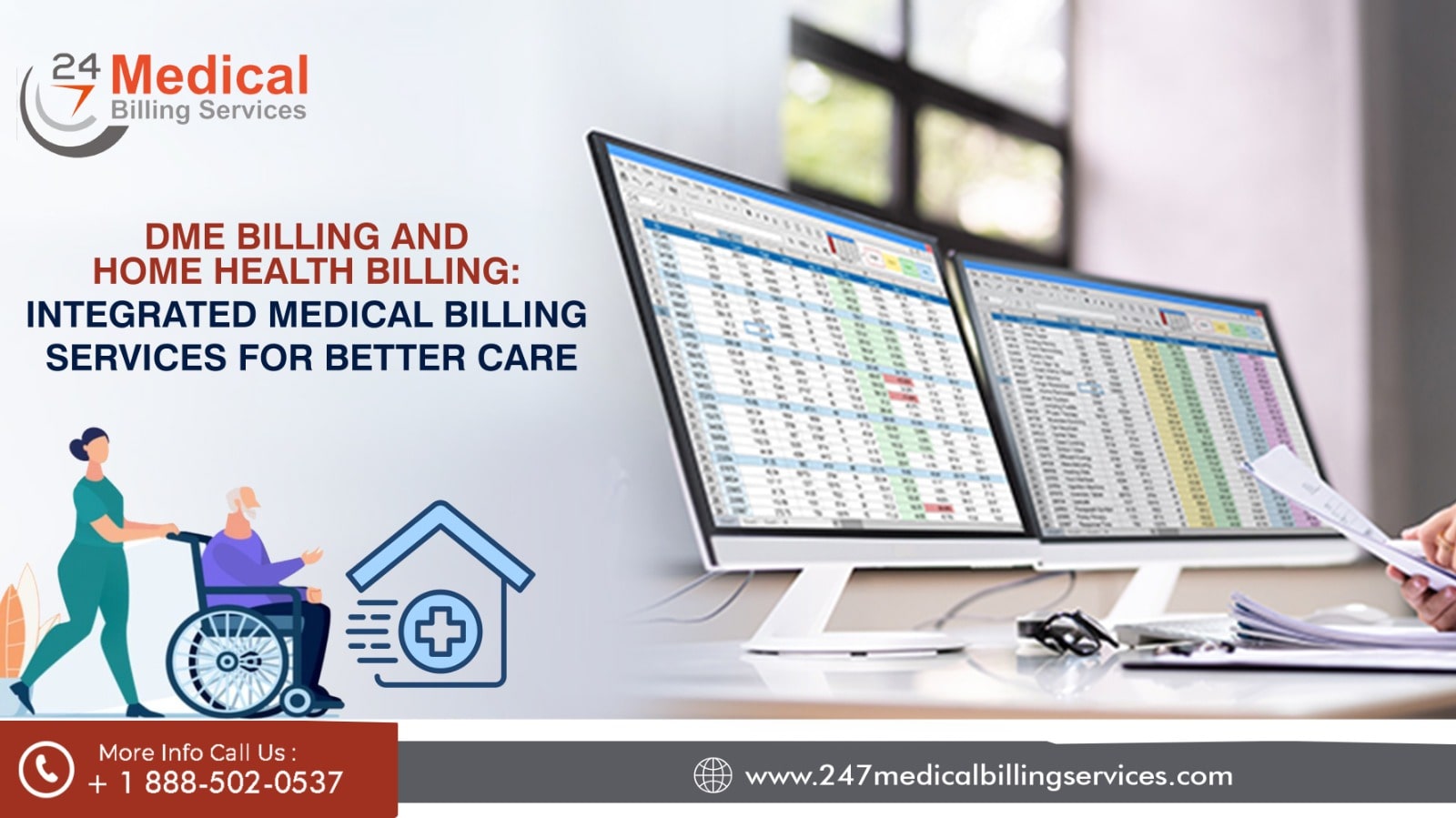
DME Billing and Home Health Billing: Integrated Medical Billing Services for Better Care
The healthcare industry is constantly evolving, and billing practices are no exception. Among the critical components of healthcare billing are Home Health billing and Durable Medical Equipment (DME) billing. Both play pivotal roles in providing quality patient care but function differently in terms of billing and reimbursement. Understanding how each billing process works and how they can be integrated is crucial for ensuring efficient operations and maximizing revenue.
Overview of Home Health Billing
Home Health billing refers to the process of coding and submitting claims for services provided to patients in their homes. This type of care includes various medical services such as nursing care, physical therapy, and other health-related services delivered directly to the patient's residence. The billing process in Home Health is guided by specific regulations and reimbursement policies, predominantly governed by Medicare, Medicaid, and other private insurance providers.But How Home Health Billing Works
- Patient Eligibility and Referral: The billing process starts with verifying patient eligibility for Home Health services. A physician must refer the patient, and a comprehensive assessment is conducted to determine the necessity of home-based care.
- Coding: Accurate coding is essential in Home Health billing. The International Classification of Diseases (ICD) codes are used to identify the patient’s diagnosis, while Current Procedural Terminology (CPT) codes are used for the services rendered. Home Health Resource Group (HHRG) codes are specific to Medicare and determine the payment rate.
- Billing and Claims Submission: After coding, the billing department submits claims to insurance providers. The claims must include detailed information about the services provided, along with the relevant codes.
- Reimbursement and Follow-up: Insurance providers review and process the claims based on established reimbursement rates. Follow-up may be required if there are denials or requests for additional information.
Overview of DME Billing
Durable Medical Equipment (DME) billing involves the process of coding and submitting claims for medical equipment that patients use at home. This includes items such as wheelchairs, oxygen tanks, and CPAP machines. DME billing is regulated by Medicare, Medicaid, and private insurers, each with specific guidelines and reimbursement criteria.But How DME Billing Works
- Prescription and Documentation: DME billing begins with a physician’s prescription for the equipment. Documentation must be collected, including a Certificate of Medical Necessity (CMN) or Detailed Written Order (DWO) to support the need for the equipment.
- Coding: Accurate coding is crucial in DME billing. HCPCS (Healthcare Common Procedure Coding System) codes are used to describe the equipment provided. Proper coding ensures correct reimbursement and compliance with billing regulations.
- Claims Submission: Claims are submitted to insurance providers along with supporting documentation. The claim should include details about the equipment, the patient, and the prescribing physician.
- Reimbursement and Follow-up: Similar to Home Health billing, DME claims are reviewed and processed based on reimbursement rates. Follow-up may be necessary if there are discrepancies or issues with the claim.
Integration of Home Health and DME Billing Services
Integrating Home Health and DME billing involves streamlining the billing processes to ensure that both services are efficiently managed and billed. This integration is essential for providing comprehensive patient care and optimizing revenue cycles. Let’s have a look at how this integration proves to be a win-win situation:- Unified Documentation: Combining documentation from Home Health and DME services helps in creating a cohesive patient record. This ensures all necessary information is available for accurate billing and reduces the likelihood of claim denials.
- Coordinated Care Management: Care coordination improves when Home Health and DME services are integrated. This ensures that the equipment provided aligns with the patient’s home care plan and that all services are billed correctly.
- Streamlined Billing Processes: Integrating billing processes helps reduce administrative overhead. It simplifies claims submission, reduces errors, and ensures timely reimbursement.
- Enhanced Data Accuracy: Integration of billing systems enhances data accuracy by eliminating the need for duplicate data entry. This improves the quality of information used in claims processing.
- Improved Efficiency: Integration of Home Health and DME billing processes streamlines administrative tasks, reduces duplication of efforts, and speeds up the reimbursement process. This leads to increased operational efficiency and cost savings for healthcare providers.
- Increased Revenue: By ensuring that all services are billed correctly and promptly, integration helps maximize revenue. It minimizes the risk of claim denials and ensures that all services provided are reimbursed appropriately.
- Better Patient Care: Coordinated care management through integrated medical billing services ensures patients receive comprehensive care without delays. This improves patient satisfaction and outcomes, as all aspects of their home-based care are managed seamlessly.
- Enhanced Compliance: Integration ensures that both Home Health and DME services comply with regulatory requirements and payer policies. This reduces the risk of compliance issues and potential penalties.
- Optimized Resource Utilization: Integrating billing systems helps in better management of resources, both human and technological. It allows for more effective allocation of resources, reducing waste and improving overall productivity.

.png)